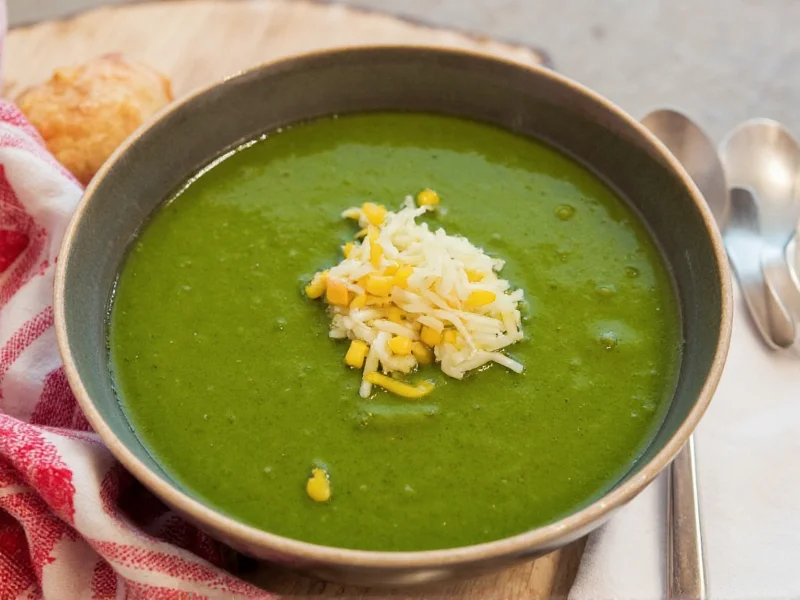Originating from Puebla, Mexico—the namesake region for poblano peppers—this versatile soup has evolved into countless regional variations while preserving its essential character. Unlike spicier Mexican dishes, authentic poblano soup showcases the pepper's complex flavor rather than overwhelming heat, typically measuring just 1,000-2,000 Scoville units. The magic happens when you properly roast and peel the peppers, unlocking their signature smokiness that defines the dish.
The Essential Poblano Pepper Profile
Understanding roasted poblano soup preparation begins with selecting quality peppers. Fresh poblanos appear dark green, glossy, and firm—avoiding any with wrinkles or soft spots. When shopping for how to make poblano pepper soup, remember these peppers transform dramatically when roasted: their skin blisters, the flesh softens, and their flavor develops complex smoky-sweet notes impossible to achieve with raw peppers.
| Pepper Characteristic | Raw Poblano | Roasted Poblano |
|---|---|---|
| Flavor Profile | Grassy, slightly bitter | Earthy, smoky, sweet |
| Texture | Firm, crisp | Soft, tender |
| Heat Level | Mild (1,000-2,000 SHU) | Even milder after roasting |
| Best Cooking Method | Raw in salsas | Roasted for soups, chiles rellenos |
Authentic Poblano Soup Recipe Framework
Creating exceptional traditional Mexican poblano soup requires attention to technique more than complexity. The foundation involves three critical stages: roasting the peppers properly, building flavor layers through sautéing aromatics, and blending to achieve perfect texture. Many home cooks make the mistake of skipping the roasting step or using canned peppers, which lack the nuanced flavor of freshly roasted poblanos.
Mastering the Roasting Process
For genuine roasted poblano soup preparation, use either a gas flame, broiler, or dry skillet. Place whole peppers directly over medium heat, turning frequently with tongs until completely blackened (about 8-12 minutes). Immediately transfer to a covered bowl for 10 minutes—this steaming process loosens the skin. Carefully peel under running water, removing all blackened skin while preserving as much flesh as possible. Properly roasted peppers should feel tender but not disintegrated.
Building Flavor Foundations
While many easy poblano soup for beginners recipes skip this step, professional chefs always sauté aromatics before adding liquids. Heat 2 tablespoons of oil over medium heat, then add 1 diced white onion and 3 minced garlic cloves. Cook until translucent (5-7 minutes), then incorporate 2 teaspoons of cumin and 1 teaspoon of dried oregano. This "sofrito" base creates depth that store-bought broth alone cannot provide.
Perfecting Texture and Consistency
The texture distinction separates good creamy poblano soup without dairy from exceptional versions. After combining roasted peppers, broth, and aromatics, simmer for 20 minutes to meld flavors. For smooth texture, blend in batches using a high-powered blender (cover the lid with a towel to prevent hot liquid explosions). For restaurant-quality results, pass the blended soup through a fine-mesh sieve—this extra step removes any fibrous bits for velvety perfection.
Variations for Every Dietary Need
Authentic vegetarian poblano soup recipe versions use vegetable broth and omit dairy, while traditional preparations often include cream or queso fresco. For gluten-free diets, ensure your broth contains no wheat-based thickeners. Those seeking poblano soup with chicken should add shredded cooked chicken during the final simmer—never boiling the meat directly in the soup, which makes it tough.
For dairy-free creaminess, blend in 1/2 cup of cooked white beans or roasted cauliflower. This technique maintains the soup's luxurious mouthfeel while accommodating dietary restrictions. Those preferring extra richness can swirl in a tablespoon of Mexican crema just before serving—this provides visual appeal and balances the pepper's natural bitterness.
Serving Traditions and Modern Twists
In Puebla, traditional Mexican poblano soup appears as both a starter and main course, often accompanied by warm corn tortillas. Contemporary presentations include topping with avocado slices, pickled red onions, or toasted pumpkin seeds for contrasting textures. For elegant entertaining, serve in shallow bowls with a drizzle of crema arranged in a decorative pattern.
Temperature matters significantly—poblano soup tastes best served piping hot but not scalding. The ideal serving temperature allows full flavor appreciation without numbing the palate. Never reheat soup multiple times, as this degrades the delicate pepper flavor. Instead, portion leftovers immediately after cooking.
Storage and Reheating Best Practices
Understanding proper poblano soup storage tips preserves flavor for future enjoyment. Cool soup completely before transferring to airtight containers—never storing while hot, which creates condensation and accelerates spoilage. Refrigerated soup maintains quality for 3-4 days; freeze for longer storage (up to 3 months).
When reheating poblano pepper soup variations, use gentle methods to prevent separation. Warm on low heat while stirring frequently—never boiling. If the soup has separated, whisk vigorously while heating or briefly blend with an immersion blender. For frozen portions, thaw overnight in the refrigerator before reheating.
Common Pitfalls to Avoid
Many easy poblano soup for beginners attempts fail due to preventable mistakes. Using under-roasted peppers leaves unpleasant bitterness; insufficient roasting prevents proper skin removal. Adding dairy directly to boiling soup causes curdling—always temper cream by mixing with a small amount of hot soup first. Over-blending creates foam that diminishes presentation. And crucially, seasoning too early distorts flavor development—add salt incrementally during cooking, with final adjustments after blending.











 浙公网安备
33010002000092号
浙公网安备
33010002000092号 浙B2-20120091-4
浙B2-20120091-4